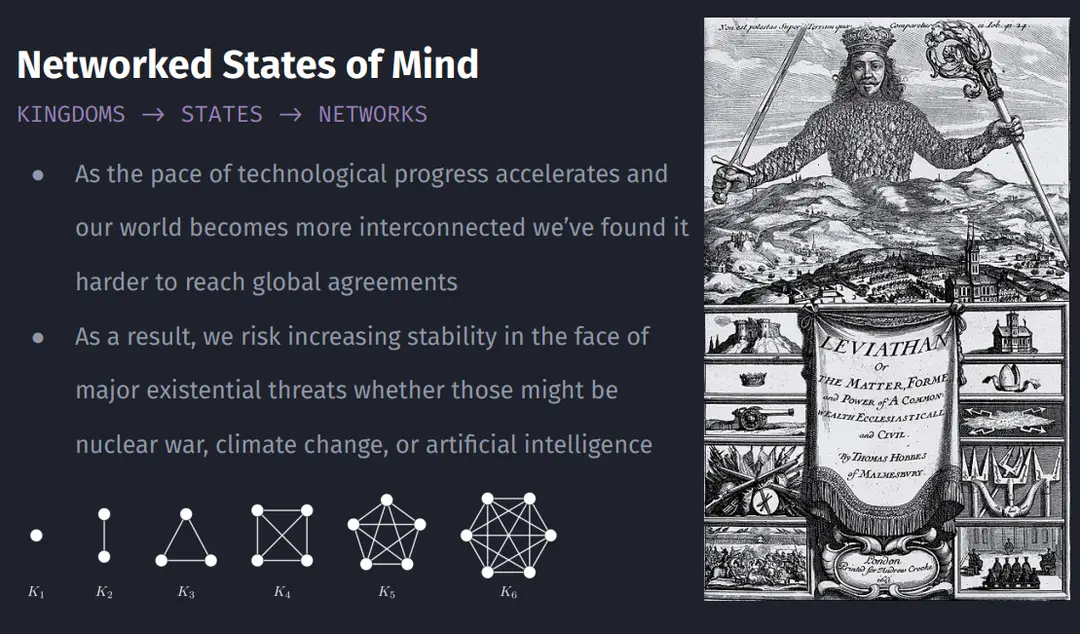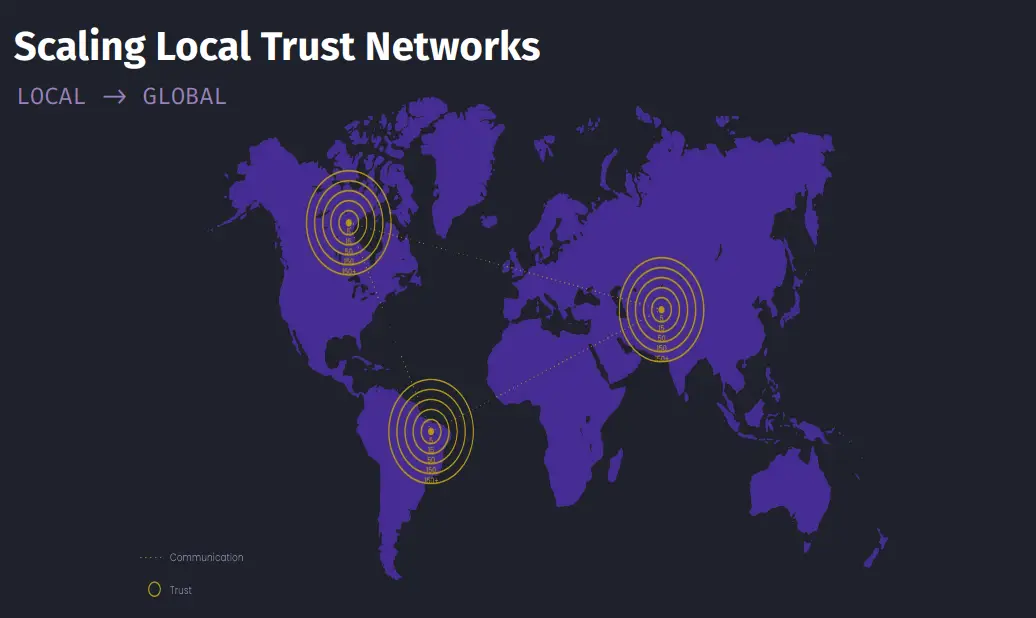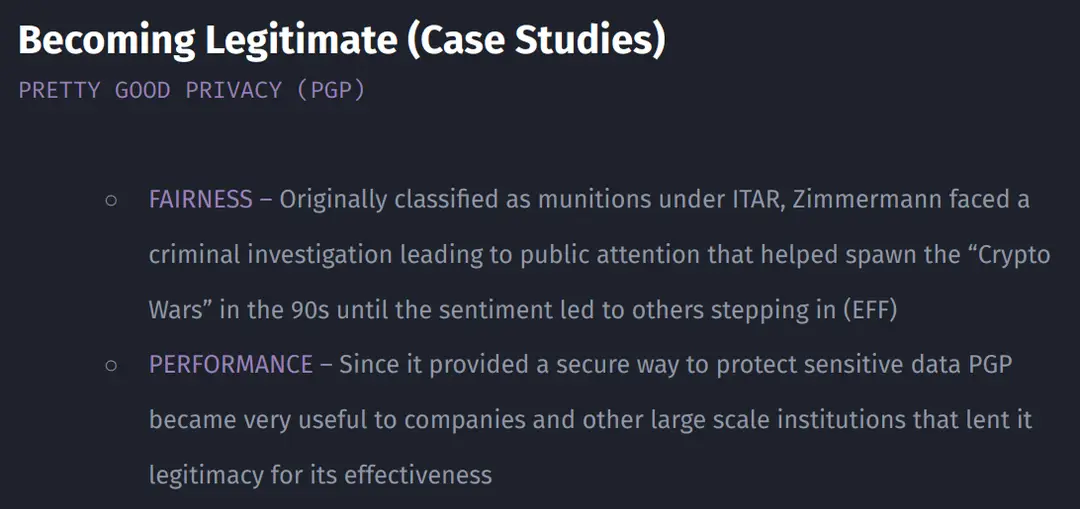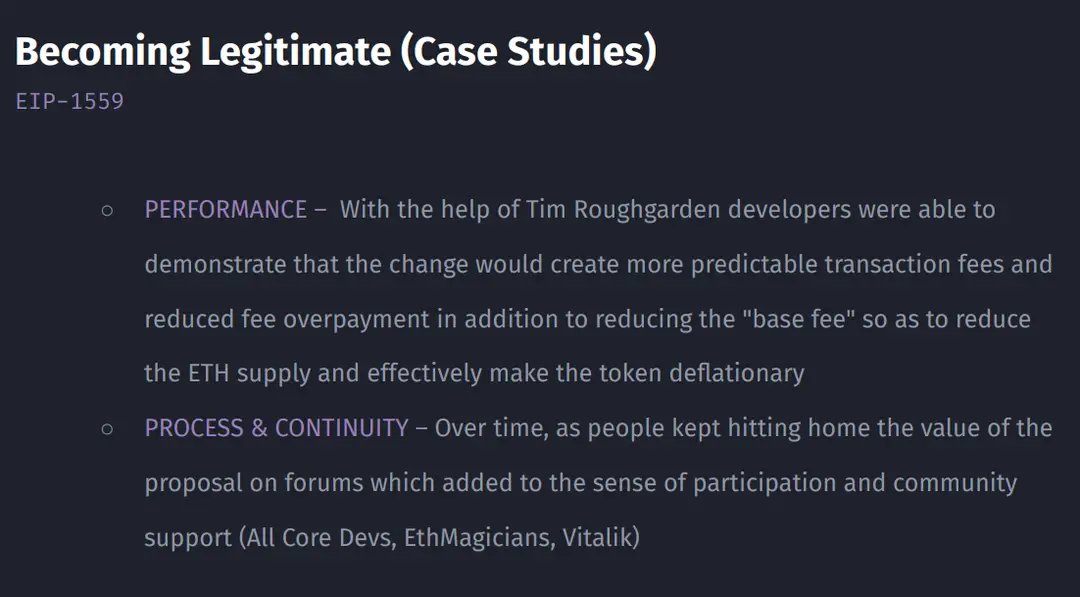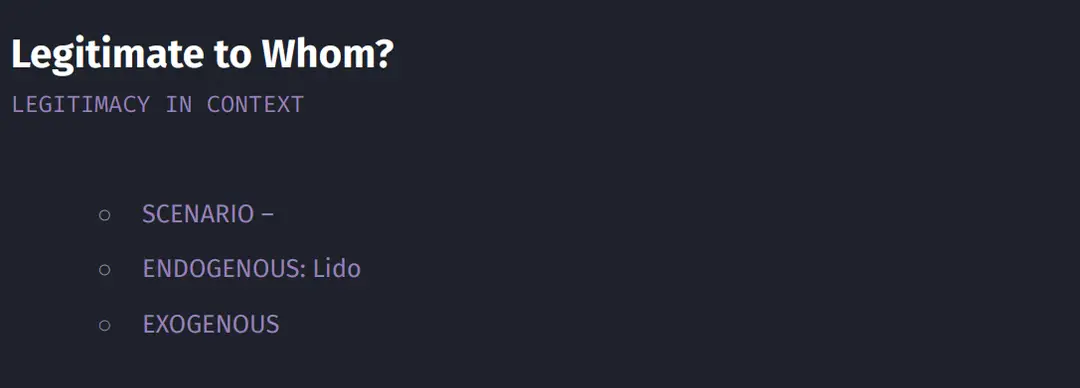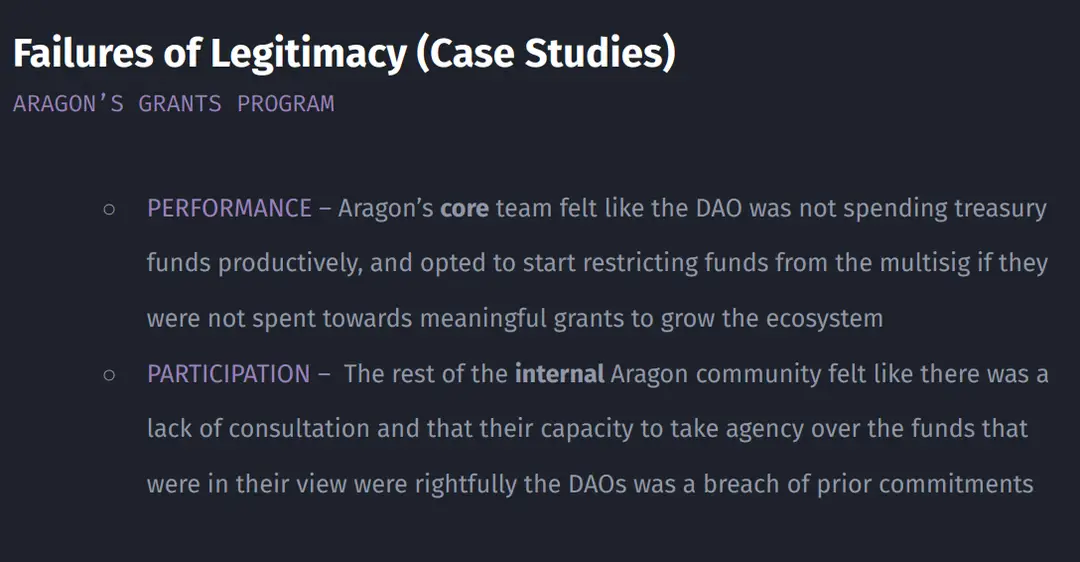Date: 7-8:30 PM SGT, July 18th 2024 / 7-8:30 AM EST, July 18th 2024
Session Title: This Talk Is Not Legitimate
NTU I&E x HackQuest MOOC is free and open to all individuals interested in Web3. The MOOC is led by top voices in crypto including Yat Siu (Co-founder, Animoca), Ed Felten (Co-founder, Offchain Labs), Sergey Gorbunov (Co-founder, Axelar), Scott Moore (Co-founder, Gitcoin), Haider Rafique (CMO, OKX), Austin Griffith (Developer Onboarding, Ethereum Foundation), Anna Yuan (Stablecoins Lead, Solana Foundation), and many more. For those who prefer having a text summary and review material, this study note provides a recap of what’s covered during the MOOC. Happy learning!
Main Topic: Philosophical beliefs and insights drawn from great thinkers, tied back to Crypto and leveraged to build Web3 protocols
Objectives:
1.Understand the concept of legitimacy in social rule-making.
2.Explore different perspectives on the origins of legitimacy.
3.Analyze case studies on legitimacy in various protocols.
Section 1: A Brief Exploration of Social Rule-Making
1.1 Why Should We Care About Legitimacy?
●Civilization's advancements through history: Aqueducts (2000 B.C.), Compasses (206 B.C.), Woodblock Printing (712), Telegraphs (1839), Subway Lines (1863), Fibre-Optic Cable (1975), The Internet (1983)
●Increasing difficulty in global agreements due to accelerated technological progress and interconnectedness
●Risk of instability from existential threats like nuclear war, climate change, and artificial intelligence
1.2 Networked States of Mind
●Evolution from kingdoms to states to networks
●Challenges in achieving global consensus in an interconnected world
1.3 Coordination via Protocols
●Speech Protocol (~150K B.C.): Using structured tones to convey meaning
●Internet Protocol (1974): Rules for transferring information
●Gasper Protocol (2020): Proof-of-stake-based consensus for global ledger state agreement
1.4 Scaling Local Trust Networks
●Moving from local to global trust networks
1.5 Solving The Standards Problem
●Reasons why protocols fail and examples of successful consensus protocols
1.6 Aligning on Alignment
●Strategies to avoid existential risks
Section 2: What is Legitimacy?
2.1 Social, Economic, and Systemic Views
●Socially: Norms and rules defining acceptable interactions
●Economically: Coordination games and pre-commitments
●Systemically: Higher-order acceptance of rules
2.2 Theories on the Origin of Legitimacy
●Max Weber (1922): Charisma, traditional norms, formal rules
●René Girard (1972): Mimetic desire, scapegoating, sacred transformation
●Vitalik Buterin (2021): Brute force, continuity, process, performance, participation, fairness
2.3 Exploring Different Perspectives
Brute Force:
●This perspective views legitimacy as derived from coercion and compliance. Thinkers like Bossuet, Clausewitz, Foucault, and Graeber have discussed how power can be used to enforce rules and standards. In this view, legitimacy is maintained through the ability to compel obedience and enforce decisions, often through threats or actual use of force. This approach can be effective in the short term but is typically unsustainable and can lead to resistance and instability over time.
Continuity:
●Legitimacy is seen as established and maintained over time through tradition and persistence. Durkheim, Goldman, and Merton emphasize that actions or institutions deemed legitimate in the past continue to be seen as legitimate due to their historical acceptance. This perspective relies on the idea that longevity and the establishment of long-standing norms and practices confer legitimacy. The longer something has been in place, the more it is perceived as legitimate.
Process:
●This view holds that legitimacy arises from the fairness and transparency of the processes that produce outcomes. Philosophers like Kant, Hart, and Rawls argue that the methods used to reach decisions are crucial. If the process is seen as fair, just, and inclusive, the outcomes are more likely to be accepted as legitimate. This approach emphasizes the importance of having established procedures and rules that are followed consistently.
Performance:
●According to thinkers like Bentham and Mill, legitimacy is based on the ability to meet the needs and expectations of the community. If an action, institution, or system effectively satisfies the needs and desires of the people, it is considered legitimate. This utilitarian perspective focuses on outcomes and the practical benefits delivered by the system or institution in question.
Participation:
●Legitimacy is derived from collective agreement and active participation. Dewey, Habermas, and Ostrom highlight the importance of involving the community in decision-making processes. This democratic approach suggests that when people have a say in how decisions are made and can contribute to the process, the resulting decisions are more likely to be seen as legitimate. This perspective emphasizes the role of inclusivity and consensus-building.
Fairness:
●The notion of fairness is an intuitive and fundamental aspect of legitimacy. It involves an inherent sense of rightness and justice that people use to judge the legitimacy of actions and institutions. This perspective suggests that legitimacy is closely tied to the moral and ethical standards of the community. When people perceive actions or systems as fair and just, they are more likely to view them as legitimate.
Section 3: Becoming Legitimate (Case Studies)
You don’t try to find a good idea, just like you don’t make a talk on legitimacy - instead, you just build something that you believe in and find interesting. —Scott Moore
3.1 Pretty Good Privacy (PGP)
●Fairness: Public attention and the Crypto Wars
●Performance: Secure data protection
3.2 EIP-1559
●Performance: Predictable transaction fees, reduced fee overpayment
●Process & Continuity: Community support and participation
3.3 Legitimate to Whom?
●Lido Staking Dominance: Internal process legitimacy vs. external participation concerns
●Aragon’s Grants Program: Performance and participation issues
3.4 Failures of Legitimacy (Case Studies)
Lido Staking Dominance:
●Internal Process: Lido's governance process is robust and includes off-chain votes on Snapshot followed by on-chain votes. Internally, this process is viewed as highly legitimate because it allows for thorough community involvement and transparent decision-making. The internal stakeholders feel confident that their voices are heard and that decisions reflect the collective will.
●External Participation: However, externally, Lido's governance has faced criticism for not self-limiting its dominance in the staking ecosystem. Critics argue that Lido's substantial control over staking could lead to centralization risks, which contradicts the decentralized ethos of blockchain. This lack of self-limitation is seen as a failure to address broader community concerns, highlighting a gap between internal legitimacy and external perceptions. This situation underscores the need for Lido to engage more with the wider ecosystem to ensure that its governance model is inclusive and addresses potential centralization threats.
Aragon’s Grants Program:
●Performance: Aragon’s core team implemented restrictions on funds from the multisig wallet to ensure they were used productively. However, this move was viewed as a breach of trust by the internal community. The core team believed that restricting funds was necessary to maintain performance and ensure resources were allocated efficiently. Yet, this decision was seen as undermining the autonomy of the community and the decentralized principles Aragon stands for.
●Participation: The internal community felt that there was a lack of consultation and transparency in the decision-making process regarding the restricted funds. This perceived top-down approach impacted the community’s sense of agency over the grants program and led to dissatisfaction. The case highlights the importance of participatory governance and the need for core teams to involve their communities in significant decisions. Ensuring that the community feels consulted and that their input is valued is crucial for maintaining legitimacy and trust.
Both cases illustrate the challenges of maintaining legitimacy in decentralized systems. While strong internal processes can create a sense of legitimacy among immediate stakeholders, it is equally important to address external perceptions and ensure inclusive participation to maintain broader community trust and support.
3.5 Can Legitimacy Be A Protocol?
●Legitimacy as a Meta-Protocol: Does this even make sense?
●No (Self-Reference): Legitimacy is too self-referential, and the only root might be violence or coercion.
●No (Intractability): Given the number of unknown inputs and context dependency, it is challenging to enumerate them in advance, making it possibly impossible (see: Asimov, Godel).
●Yes, Weakly (P2P Perspective): Legitimacy might be viewed as a function of the current state or measure of change within a web of trust given some action. In peer-to-peer (P2P) networks, legitimacy can be derived from the collective acceptance and trust of participants, forming a decentralized basis for legitimacy. ●Yes, Weakly (Ontological Perspective): Legitimacy might be considered the ultimate protocol that maintains our social capacity to align on new ones. This perspective suggests that legitimacy itself can be seen as a foundational protocol, much like the notion of time, which structures our social interactions and agreements.
The study of philosophical insights on legitimacy might shed lights on developing Web3 protocols. Understanding the origins and nature of legitimacy helps navigate the complexities of creating globally accepted rules. Historical advancements show the increasing challenge of global consensus amid rapid technological progress. Case studies like Pretty Good Privacy (PGP) and EIP-1559 illustrate how performance, process, continuity, and participation establish protocol legitimacy. While the concept of legitimacy as a meta-protocol is complex and context-dependent, it remains foundational for trust and alignment in decentralized networks.
1.Question: How can we leverage the learnings with minting and designing crypto projects?
Answer: The biggest takeaway is to construct something that is legitimate and matters to people over time. It should have a clear reason for being and resonate with its users. Projects like Gitcoin and Uniswap succeeded because they established mechanisms and values that resonated with their communities beyond just their primary functions.
2.Question: Should these mechanisms (legitimacy) be set up since the early stage or later? Feels like if projects have concerns around legitimacy, they already made it.
Answer: It's important to build something aligned with your community from the start. Don’t over-engineer legitimacy but ensure your project resonates with the group you want to engage with and includes them in the journey. This helps in rallying people and making the project successful in the long run.
3.Question: I’m interested in decentralized social networks and Web3 and AI. My idea is allowing creators to publish and earn proceeds, and supporters can stake project-native tokens to earn a percentage of proceeds and join gated communities. Any feedback?
Answer: Decentralized social media can address legitimacy problems in current platforms. Giving creators more ownership and participation can create a valuable alternative. Focus on a specialized community first and ensure your monetization method is worthwhile for creators and advertisers. Start small and expand gradually.
4.Question: What are your thoughts on meme coins in general versus other projects people could be building?
Answer: Meme coins reflect financial nihilism and disenchantment with existing systems. They capture attention but shouldn’t be the focus of crypto’s future. Some meme communities are leveraging their attention for good, but the ecosystem should aim for more meaningful projects. Understanding why people participate in meme coins can help address broader issues in the ecosystem.
5.Question: I’m building a dApp that gamifies life and goals where people can stake money for their goals and others can donate crypto to it. Thoughts?
Answer: It’s a cool idea, but ensuring liquidity and clear goal specification is key. Look at examples like prediction markets for bootstrapping liquidity. Start with a focused area and build from there, ensuring the goals are meaningful and achievable.

